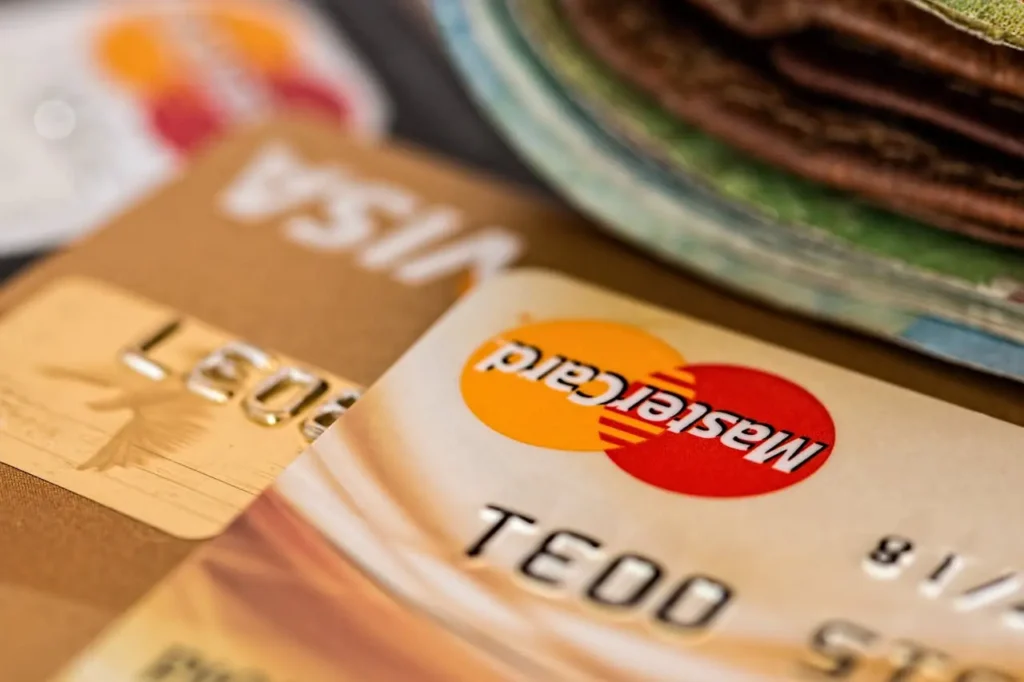Table of Contents
ToggleIntroduction: Why Borrowing Smart Matters in 2025
As the cost of higher education continues to rise, more students in the U.S. are relying on loans to finance their academic journey. In 2025, with the average student loan debt surpassing $39,000, it’s never been more important to understand the risks of borrowing and how to manage repayment responsibly. Taking out student loans can open the door to career opportunities, but poor decisions during the borrowing and repayment process can lead to long-term financial stress, credit damage, and missed life goals. Whether you’re just starting college or already managing student loan payments, recognizing common student loan mistakes—and knowing how to avoid them—can make a significant difference in your financial future.
This guide highlights 10 common student loan mistakes and how to steer clear of them:
1. Misrepresenting Details on Financial Aid Forms
Filling out the Free Application for Federal Student Aid (FAFSA) is a critical step in securing federal student aid, and it must be done truthfully. Intentionally providing false or misleading information—such as underreporting your income, assets, or household size—may seem like a harmless shortcut to increase your eligibility for aid, but it’s considered fraud.
In 2025, the U.S. Department of Education has increased its data-matching capabilities and cross-checks information against Internal Revenue Service (IRS) records, which makes it easier than ever to get caught. The penalties are serious: beyond fines of up to $20,000 and the immediate loss of your financial aid, a conviction could result in imprisonment and a permanent criminal record that follows you into your career. Moreover, even unintentional errors can lead to delays in processing or the denial of aid. To stay compliant, always double-check your FAFSA for accuracy, consult a financial aid counselor if you’re unsure, and respond promptly to any verification requests from your school.
2. Borrowing Without Understanding Loan Terms
Before accepting a loan, many students fail to thoroughly review the loan agreement, including interest rates, repayment schedules, grace periods, and borrower protections. In 2025, this oversight remains common and can lead to surprises down the road. Not all loans are created equal—federal loans typically offer more borrower protections than private loans, including deferment options and income-driven repayment plans. Private loans may have variable interest rates that can increase over time. If you don’t understand the implications of your loan terms, you might end up with unmanageable payments or inflexible conditions. Take the time to read all documentation, ask questions, and compare loan offers before borrowing. Understanding your loan contract fully can help you make informed decisions that align with your long-term financial goals.
3. Misusing Loan Disbursements for Lifestyle Spending
While student loans are intended to cover essential educational expenses such as tuition, books, housing, and food, some borrowers treat excess funds like disposable income. In 2025, when private and federal loan interest rates can exceed 7% annual percentage rate (APR), using student loans to finance non-educational purchases—like gaming consoles, vacations, or frequent takeout—can become incredibly costly. These indulgent purchases add up over time, and because of compounding interest, you could end up paying double for every dollar spent unnecessarily. Financial experts recommend creating a student budget that separates needs from wants. If you receive a refund from your school that exceeds your essential expenses, it’s wiser to return the surplus to your loan servicer or place it in a high-yield savings account for future loan payments. Managing borrowed funds responsibly can not only help you graduate with less debt but also cultivate financial discipline that will serve you well post-graduation.
4. Relying Too Heavily on Loans Instead of Seeking Other Aid
Many students default to taking out loans without fully exploring other forms of financial aid. This often results in borrowing more than necessary and accruing avoidable interest. In 2025, students have access to a wider variety of scholarships, grants, work-study programs, and tuition reimbursement plans from employers. Overlooking these options is a costly mistake. Unlike loans, scholarships and grants do not need to be repaid and can significantly reduce your reliance on debt. Take the time to apply for local, national, and institutional scholarships, many of which go unclaimed each year. Meet with a financial aid advisor to ensure you’re maximizing every opportunity for free aid. By supplementing loans with other funding sources, you can limit your debt burden and improve your post-graduation financial outlook.
5. Choosing a Repayment Plan That’s Too Lenient
When it comes to repaying student loans, many borrowers gravitate toward plans with the smallest monthly payments. While these plans may seem manageable in the short term, they often result in much higher interest payments over time. For example, the Saving on a Valuable Education (SAVE) Plan, introduced in 2024, offers low monthly payments based on discretionary income but can stretch your repayment period up to 25 years. That means you might pay significantly more than you originally borrowed. Choosing a plan solely for its low payments without considering your long-term financial goals is a common mistake. Instead, evaluate all available options, including the standard 10-year repayment plan, which typically results in less interest paid over the life of the loan. Use tools like the Federal Student Aid Loan Simulator to model different scenarios based on your projected salary. Paying a bit more upfront can lead to substantial savings in the long run.
6. Ignoring the Impact of Interest Accrual During School
Another frequently overlooked aspect of student loans is how interest accrues while you’re still in school. For most unsubsidized federal loans and all private loans, interest begins accumulating the moment the funds are disbursed—even if you’re not required to make payments while enrolled. In 2025, many borrowers graduate owing significantly more than they originally borrowed due to unchecked interest capitalization. One way to combat this is by making small interest-only payments while you’re still in school or during the grace period after graduation. Even minimal contributions can prevent thousands in extra interest. Consider automating these payments if your budget allows. Additionally, explore lenders that offer interest rate reductions for in-school payments or good grades. Staying ahead of interest can make repayment faster, cheaper, and less stressful after graduation.
7. Ignoring Refinancing and Consolidation Opportunities
As economic conditions shift, refinancing or consolidating your student loans can be a powerful strategy to reduce interest costs and simplify repayment. In 2025, interest rates for private loans vary widely, and borrowers with strong credit histories and steady incomes may qualify for rates significantly lower than their current loans. Refinancing allows you to replace high-interest loans with a new loan at a lower rate, potentially saving thousands over the loan’s lifetime.
Consolidation, on the other hand, can combine multiple federal loans into one, making monthly payments easier to manage. However, refinancing federal loans with a private lender comes with trade-offs—you’ll lose access to benefits like income-driven repayment plans, forbearance, and federal loan forgiveness programs. That’s why it’s essential to weigh your options carefully and run the numbers using refinancing calculators. If you’re not ready to refinance, consider making additional payments toward the principal, or enrolling in autopay to qualify for interest rate discounts.
8. Skipping or Forgetting Loan Payments
Missing even a single student loan payment can have lasting consequences. In 2025, loan servicers report missed payments to credit bureaus once they are 30 days past due, which can result in a drop in your credit score. This not only impacts your ability to take out other loans, such as auto or mortgage loans, but can also influence job applications, rental approvals, and insurance premiums. Many borrowers assume they’ll catch up the next month, but the damage to their credit is already done. To avoid missed payments, set up automatic withdrawals or payment reminders. If you know you’re going to have trouble making a payment, contact your loan servicer immediately. You may be eligible for a revised payment plan, temporary deferment, or forbearance. Being proactive preserves your credit and helps you stay in good standing without defaulting.
9. Not Asking for Help or Exploring Forgiveness Options
Student loan repayment doesn’t have to be a solo journey. In 2025, there are more resources than ever to assist borrowers—ranging from federal repayment tools to nonprofit loan counseling services. Yet many borrowers never ask for help or investigate forgiveness programs they may qualify for. For example, Public Service Loan Forgiveness (PSLF) forgives the remaining loan balance after 120 qualifying payments while working for a nonprofit or government employer. Similarly, the SAVE Plan offers forgiveness after 10 years for low-balance borrowers. Additionally, some employers now offer student loan repayment assistance as a benefit. Don’t wait until you’re behind to explore your options. Proactively researching federal relief programs, contacting your loan servicer, or consulting with a certified student loan counselor can uncover paths to reduce your burden or even eliminate your debt entirely.
10. Allowing Your Loan to Go Into Default
Loan default is one of the most damaging financial outcomes a borrower can face. For federal student loans, default occurs after 270 consecutive days of missed payments. Once in default, the entire loan balance becomes due immediately, and the federal government has broad powers to collect the debt—including garnishing wages, withholding tax refunds, and seizing Social Security benefits.
In 2025, default rates remain high among borrowers who leave school without completing a degree, as well as those in low-income brackets. Defaulting also incurs hefty collection fees, and the negative information can stay on your credit report for up to seven years. If you’re experiencing hardship, don’t ignore the problem—contact your servicer to explore alternatives like deferment, forbearance, or enrolling in an income-driven repayment plan. You can also pursue rehabilitation, which restores your loan to good standing after making nine on-time payments.
Final Thoughts: Borrow Wisely, Pay Strategically
Student loans are a powerful tool for unlocking educational and professional opportunities, but they must be managed with care. As tuition costs rise and loan structures evolve in 2025, informed decision-making is more important than ever. By avoiding these ten common borrowing and repayment mistakes, you’ll protect your credit, reduce your financial stress, and potentially save thousands of dollars. The key is to treat student loans not as free money, but as a financial commitment. Research all your options, make proactive payments when possible, and take full advantage of available aid and forgiveness programs. With a strategic approach, you can graduate with a degree—and a strong financial foundation to build your future.
Frequently Asked Questions (FAQ)
What happens if I make a mistake on my FAFSA in 2025?
Mistakes on the FAFSA in 2025—whether intentional or accidental—can delay your financial aid processing or even lead to legal consequences. The U.S. Department of Education now uses enhanced data-matching tools to cross-reference your application with IRS records, making it easier to detect inconsistencies. If you misrepresent information, you could lose access to aid, face fines of up to $20,000, or even risk jail time for fraud. Even honest errors can cause processing delays, so it’s crucial to double-check all information and consult a financial aid advisor if you’re unsure.
Is it bad to borrow student loans without reading the terms?
Yes, borrowing student loans without fully understanding the terms can lead to serious financial consequences. In 2025, students often overlook key details like interest rates, repayment schedules, and whether the loans are federal or private. Federal loans typically offer more flexible repayment options and protections, while private loans may come with variable interest rates and fewer safety nets. If you sign without reviewing the terms, you may be stuck with unaffordable payments or miss out on helpful repayment programs.
Can I use my student loan money for non-educational expenses?
While technically possible, using student loan funds for non-educational expenses is a risky and costly mistake. Student loans are intended to cover tuition, books, housing, and food—essential expenses tied to your education. Spending the surplus on luxuries like travel or entertainment may seem harmless, but in 2025, with interest rates above 7% APR, these choices could double your debt over time due to compounding interest. Managing loan funds wisely ensures you minimize debt and develop better financial habits.
Why is relying only on student loans a bad idea?
Relying solely on student loans without exploring scholarships, grants, or work-study opportunities often leads to excessive debt. In 2025, thousands of scholarships and tuition assistance programs go unclaimed each year. Unlike loans, scholarships and grants don’t need to be repaid, and work-study programs offer income while you’re in school. Maximizing these alternatives reduces your borrowing needs and positions you for a stronger financial start after graduation.
Are low monthly student loan payments always a good idea?
Low monthly payments may seem appealing, but they often extend your repayment period and increase the total interest paid. For example, income-driven plans like the SAVE Plan offer manageable payments but can stretch out for 20 to 25 years. While this can relieve short-term financial stress, you could end up repaying far more than your original loan amount. If possible, choose a repayment plan that balances affordability with faster payoff to save money in the long run.
Does interest on student loans accrue while I’m still in school?
Yes, for most unsubsidized federal loans and all private loans, interest begins to accrue as soon as the funds are disbursed—even if you’re still in school. Many borrowers in 2025 don’t realize that this accumulated interest can be capitalized, adding to the total loan balance when repayment begins. Making small interest-only payments while you’re enrolled can significantly reduce the amount you owe upon graduation and help you avoid ballooning debt.
Is it worth refinancing student loans in 2025?
Refinancing student loans in 2025 can be a smart move if you have a strong credit profile and stable income. It allows you to replace high-interest loans with a new loan at a lower rate, potentially saving thousands over time. However, refinancing federal loans with a private lender means forfeiting federal benefits like income-driven repayment, deferment, and forgiveness programs. Carefully assess your financial goals and use online calculators to compare options before making the switch.
What are the consequences of missing a student loan payment?
Missing a student loan payment—even once—can damage your credit score and trigger additional fees. As of 2025, most loan servicers report payments that are over 30 days late to credit bureaus, which can negatively impact your ability to rent an apartment, get a job, or qualify for other loans. Setting up autopay or reminders can help avoid this. If you’re struggling to pay, contact your servicer immediately to discuss modified repayment plans or temporary relief options.
How do I know if I qualify for student loan forgiveness programs?
Eligibility for student loan forgiveness in 2025 depends on your employment, repayment history, and loan type. Programs like Public Service Loan Forgiveness (PSLF) are available to borrowers working for qualifying nonprofit or government employers and making 120 eligible payments. The SAVE Plan also offers forgiveness after 10 years for borrowers with low original balances. To find out if you qualify, check with your loan servicer or use the Federal Student Aid website to explore forgiveness criteria based on your situation.
What should I do if I’m at risk of student loan default?
If you’re at risk of defaulting—defined for federal loans as being 270 days past due—it’s critical to act quickly. In 2025, defaulting on student loans can result in wage garnishment, tax refund seizure, and long-term credit damage. To avoid this, contact your loan servicer to explore options like deferment, forbearance, or income-driven repayment. You may also qualify for loan rehabilitation, which allows you to return your loan to good standing after nine on-time payments.
Featured image credit: Cottonbro Studio (Pexels)


